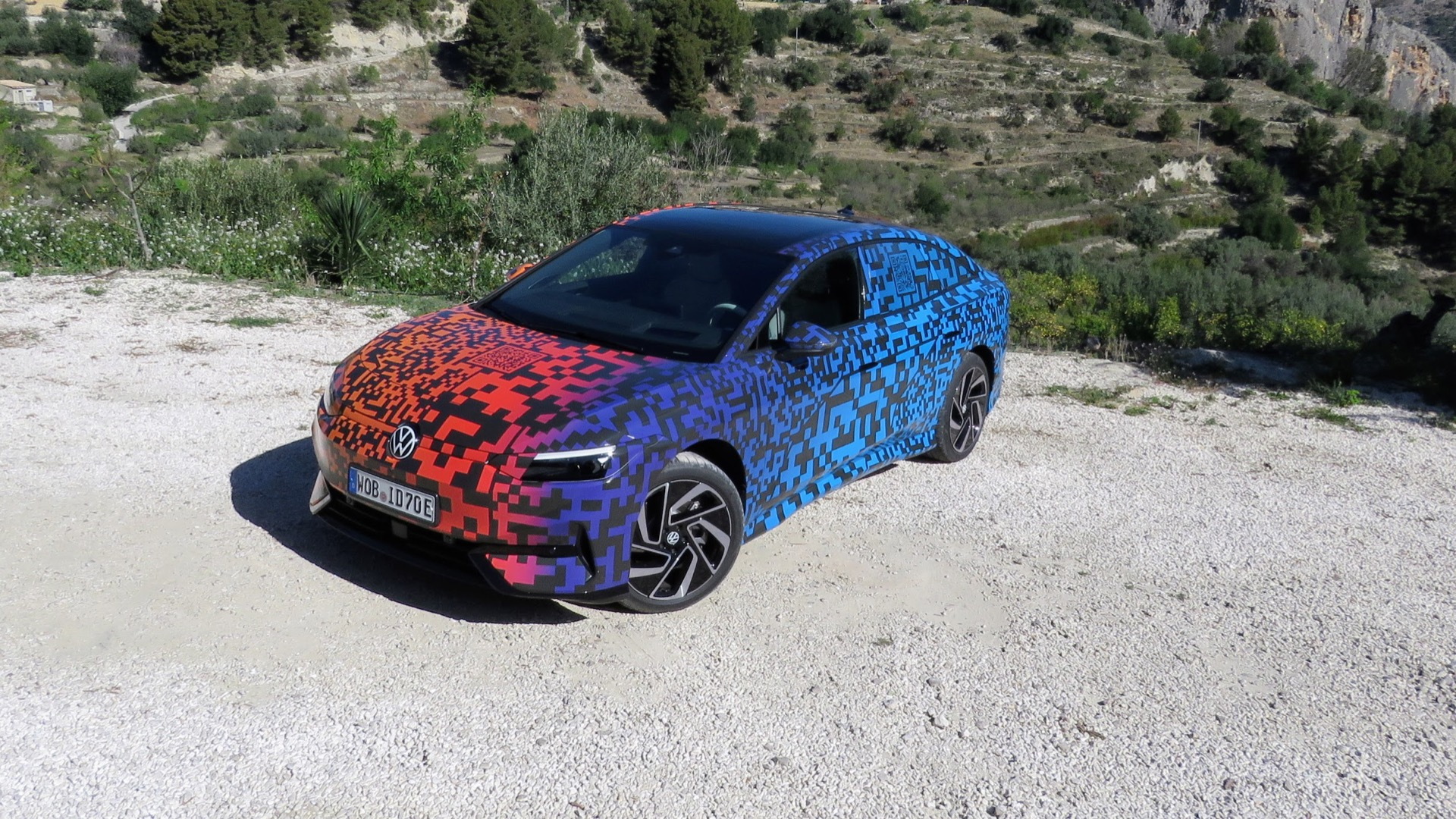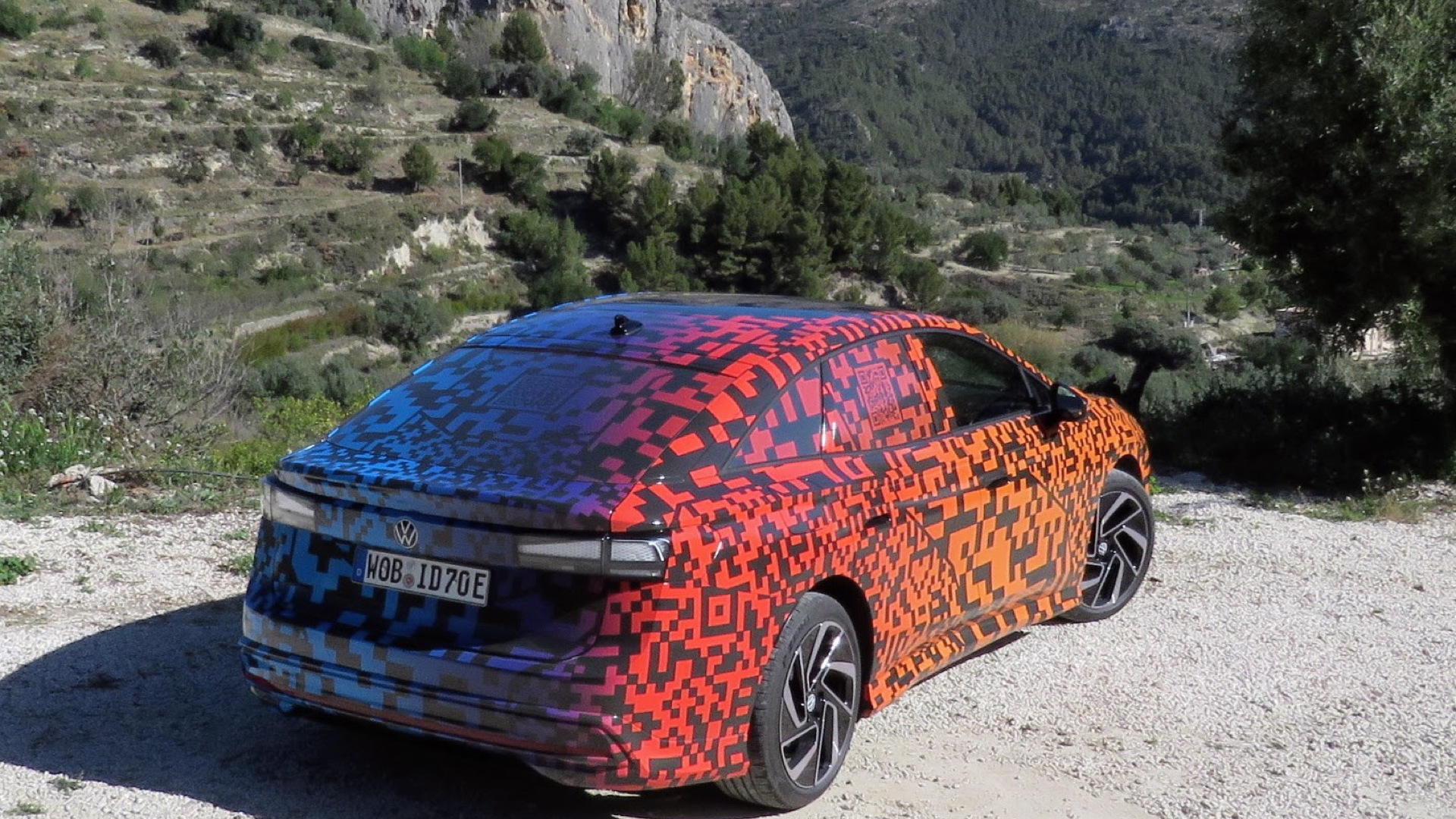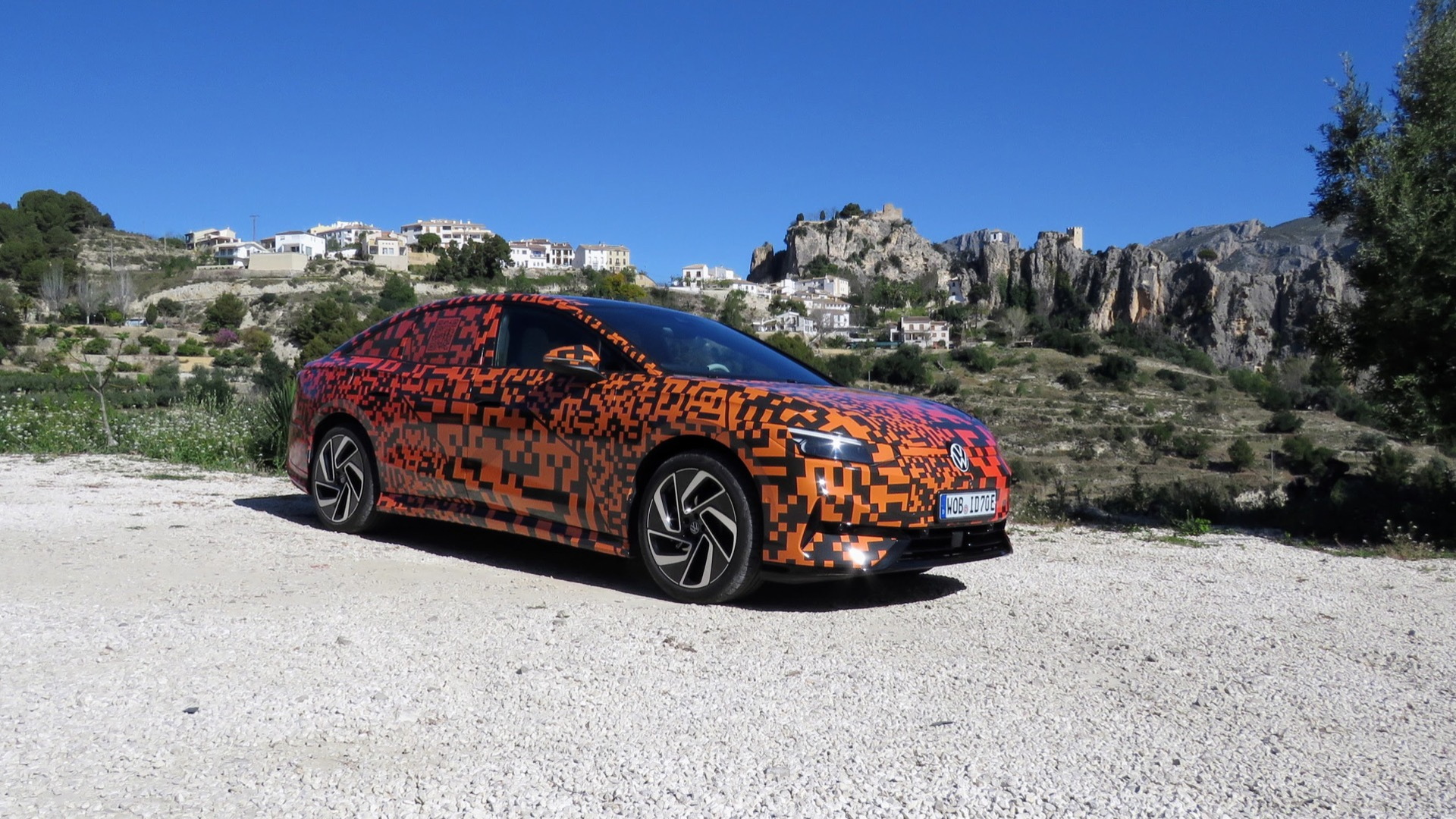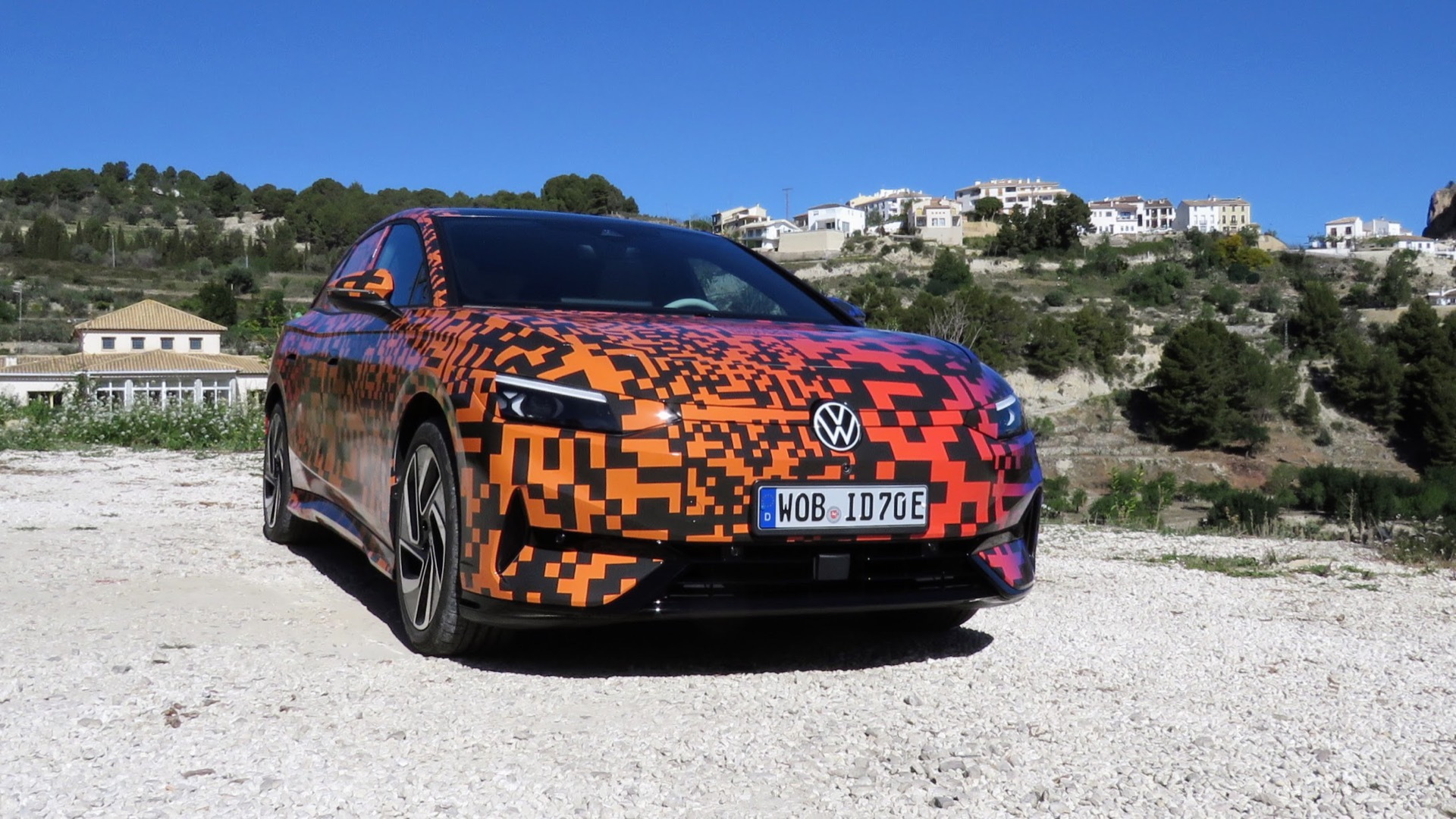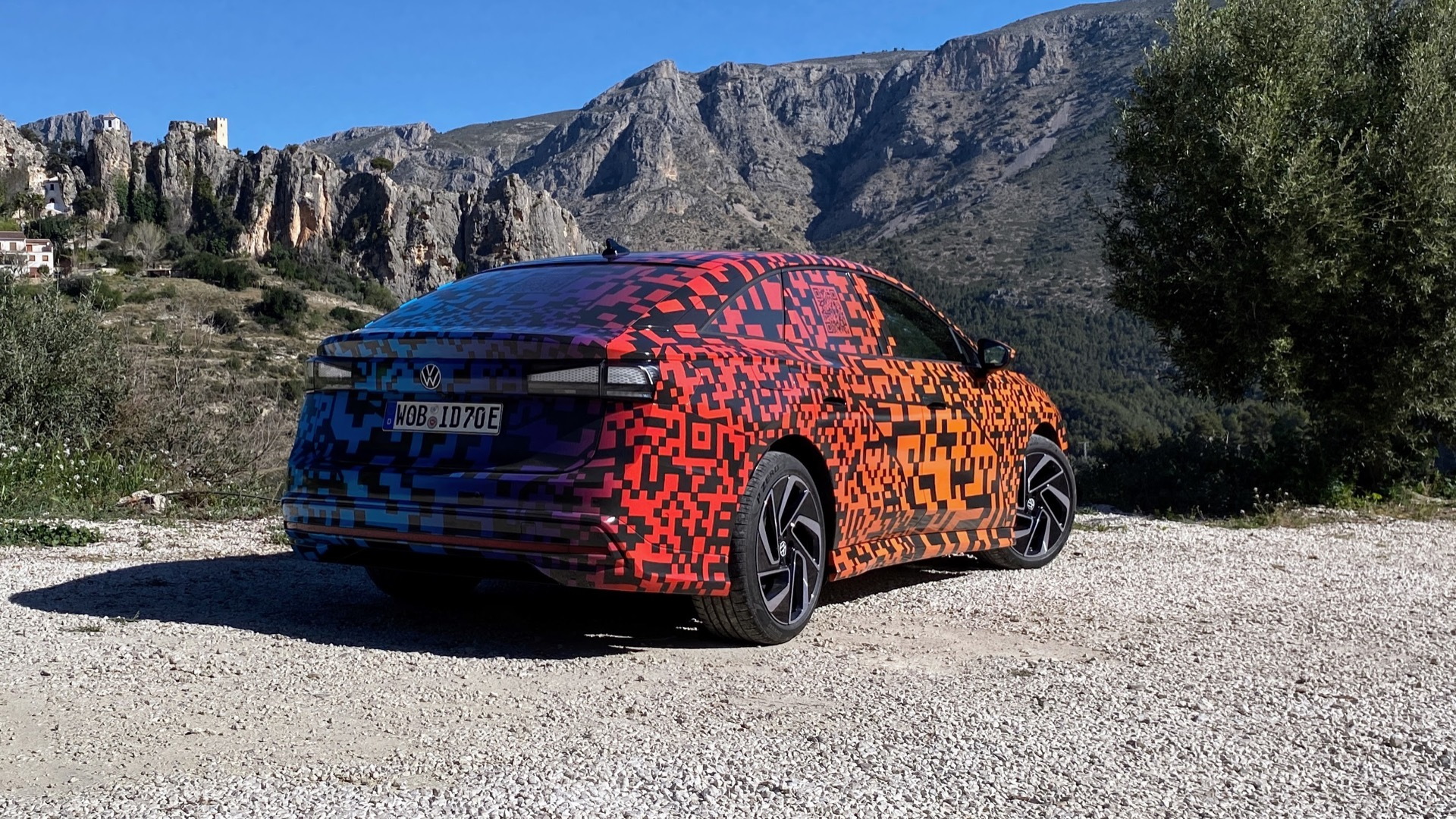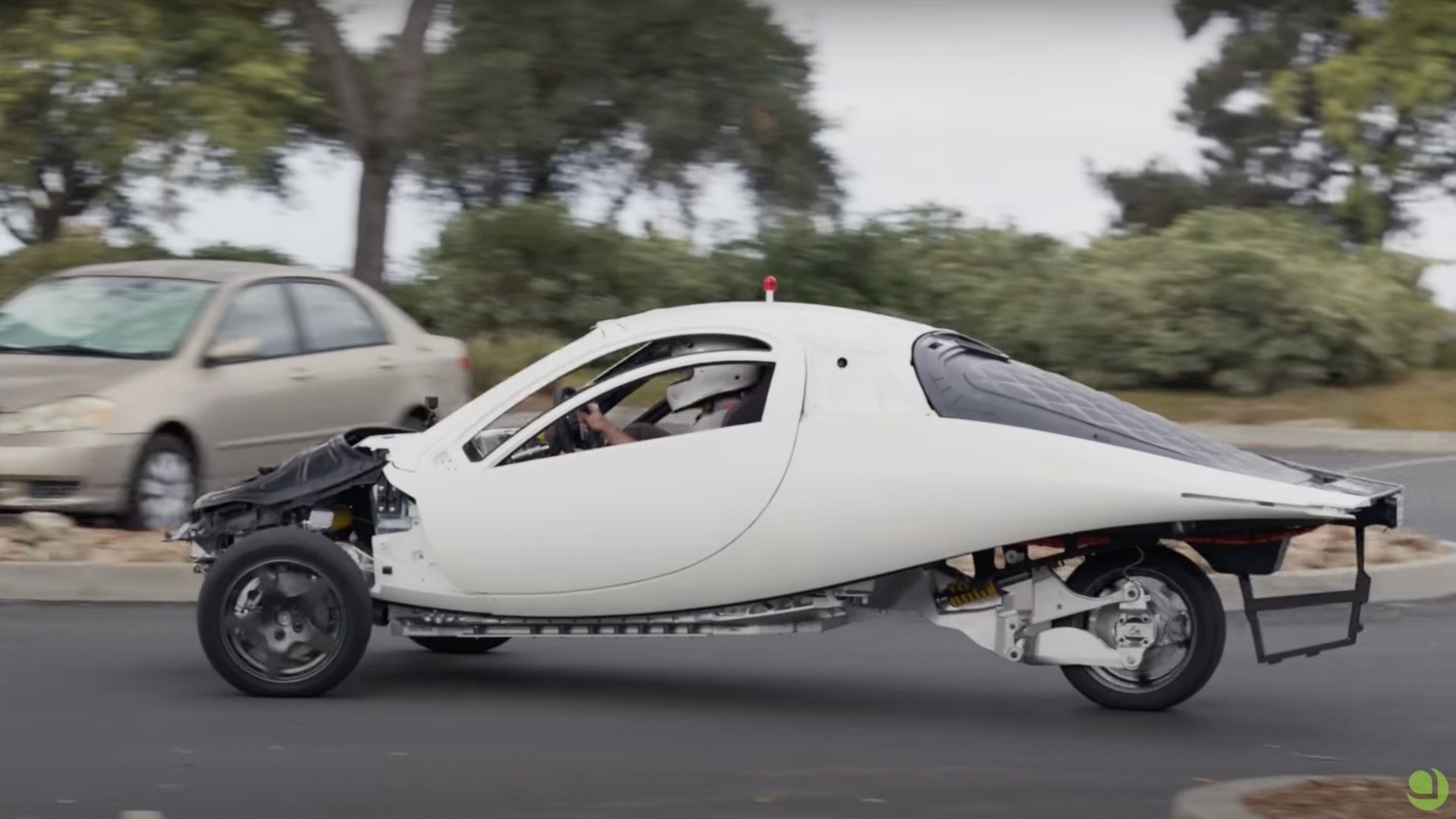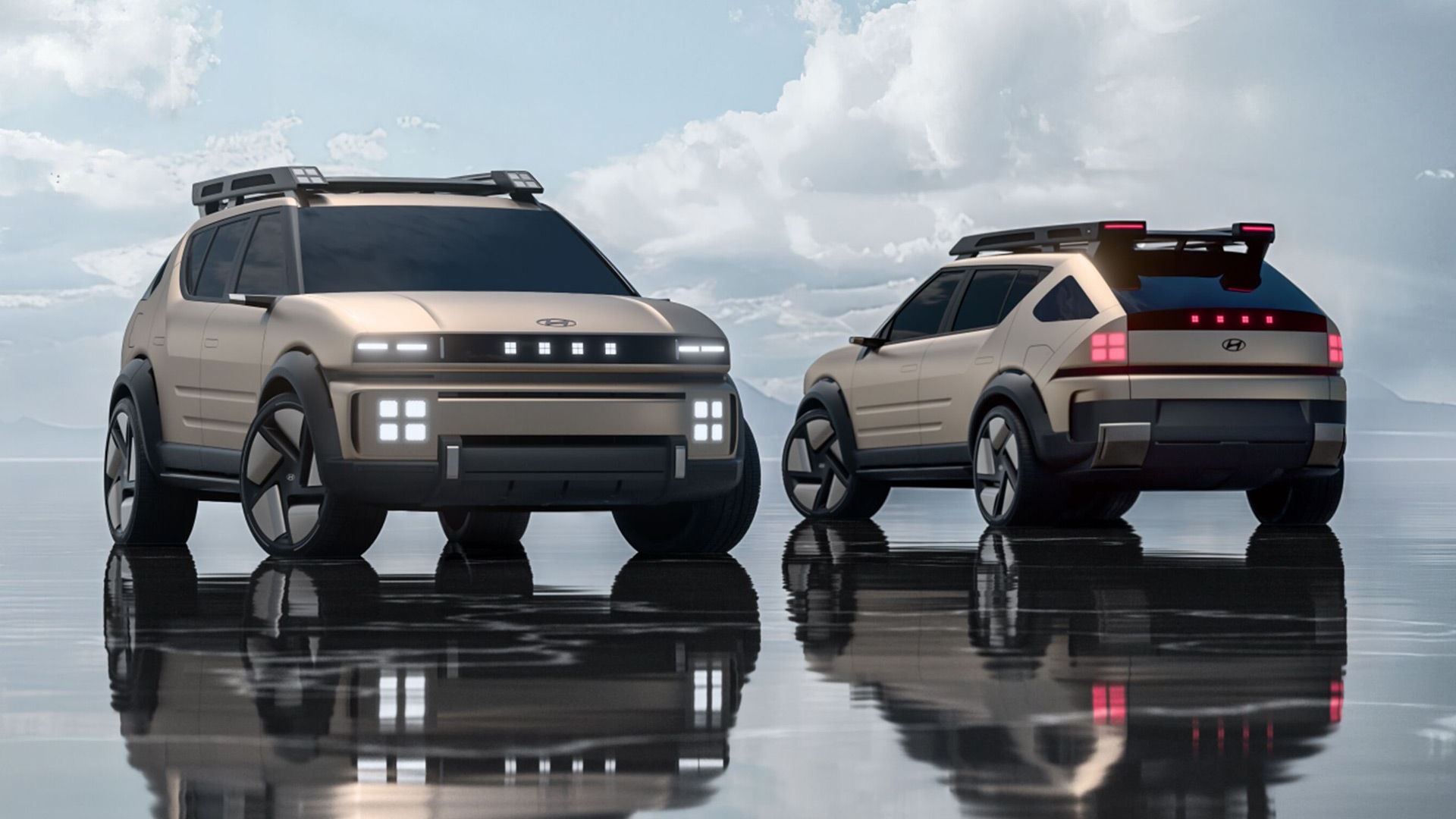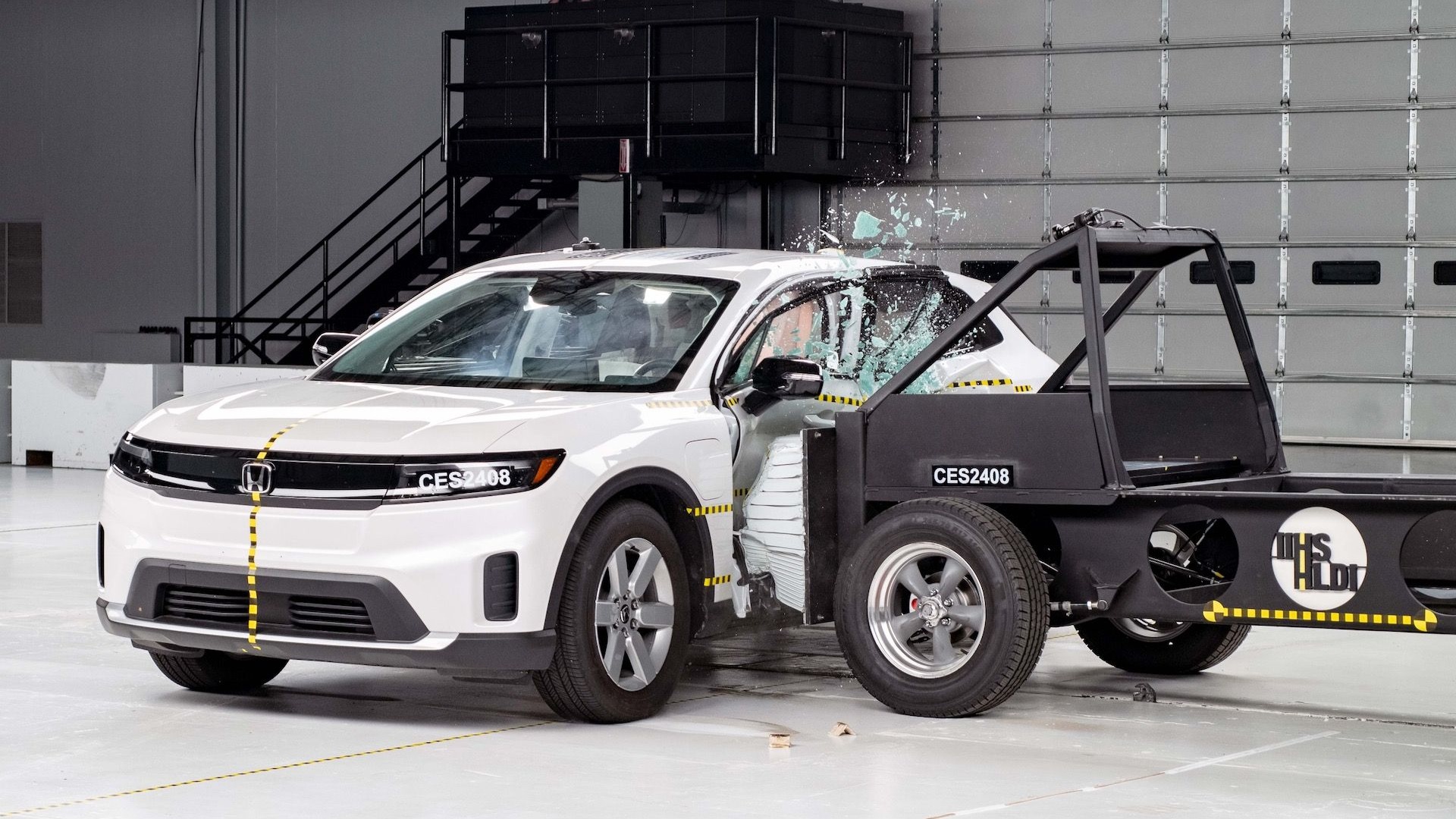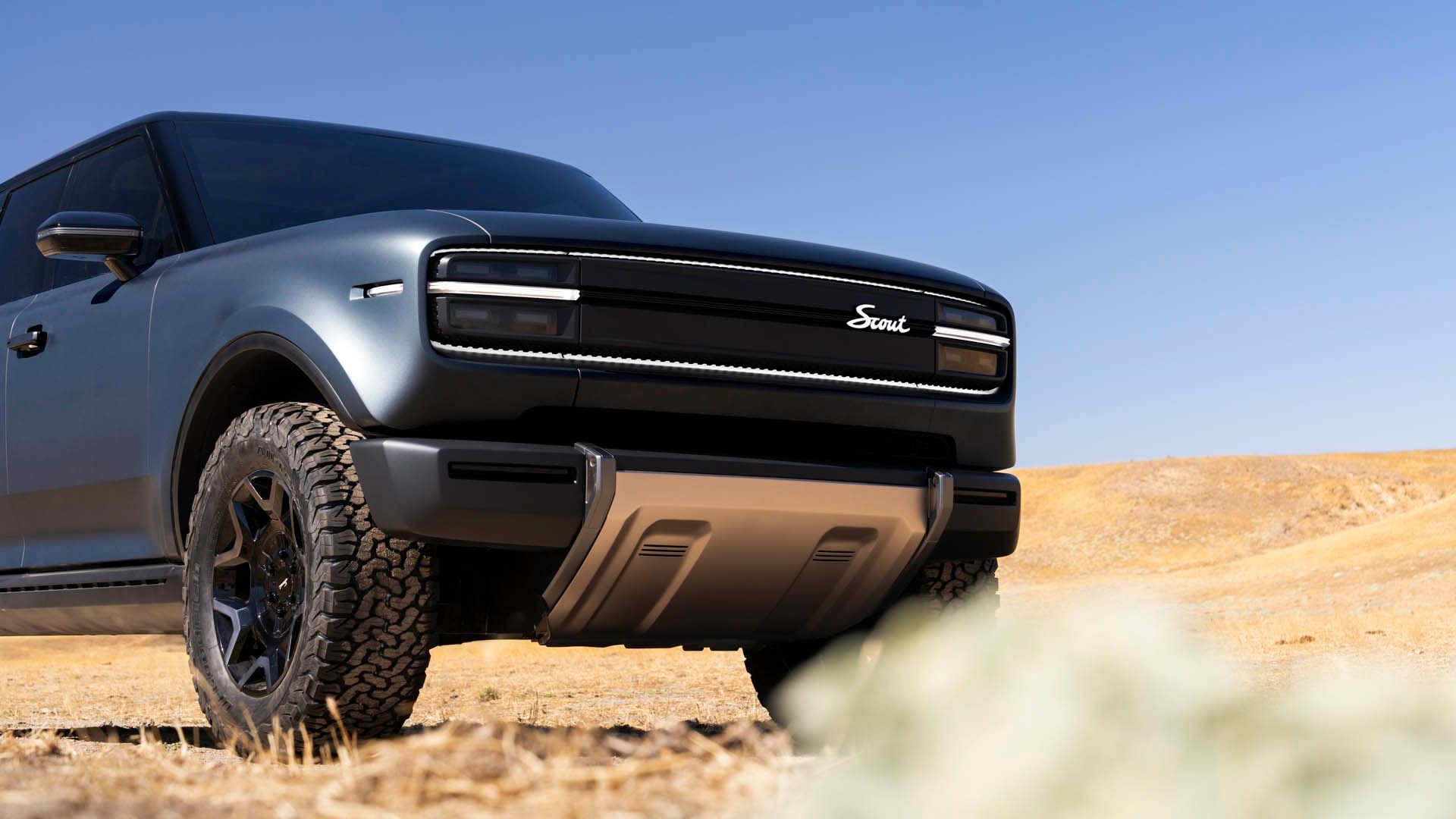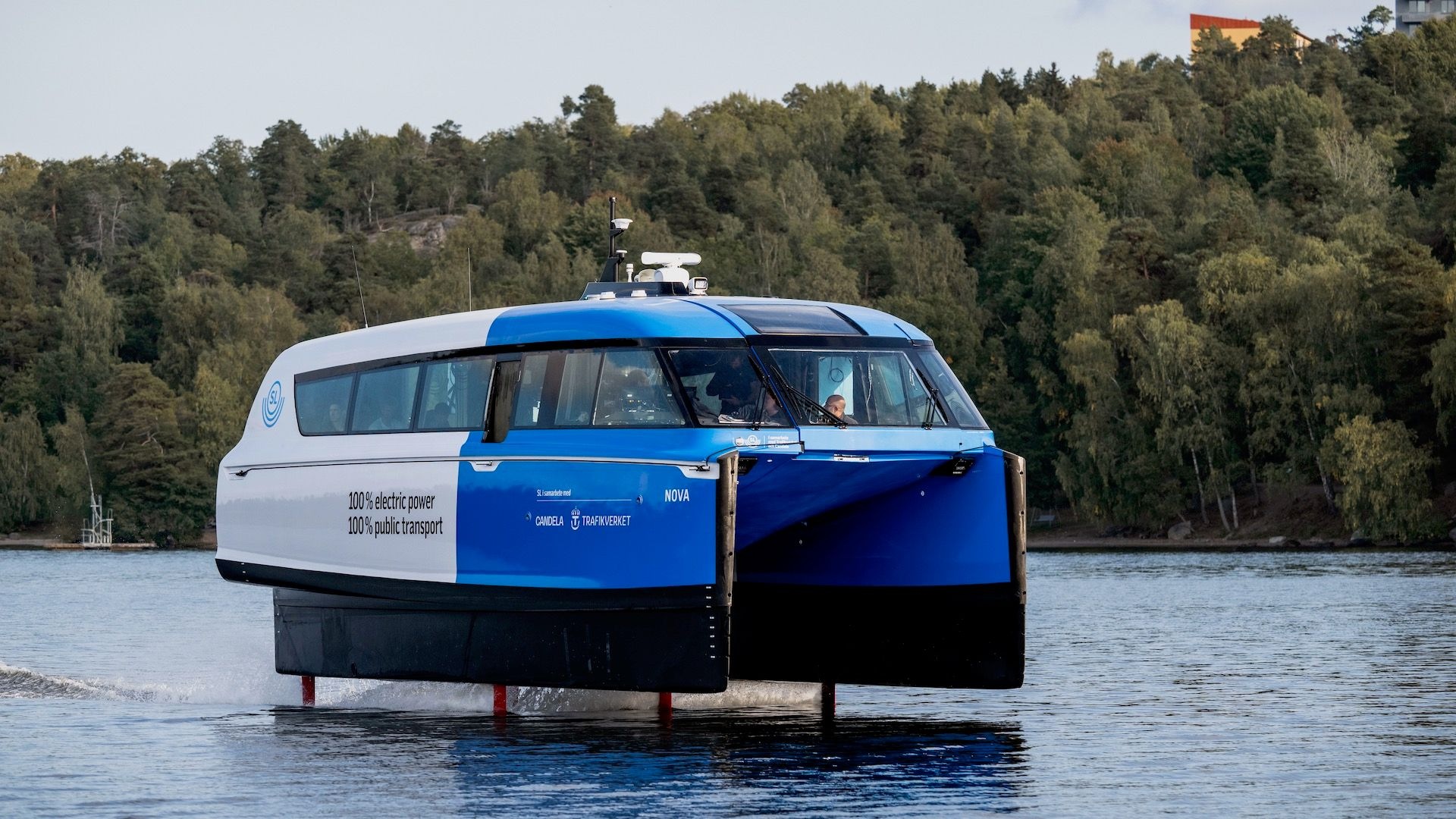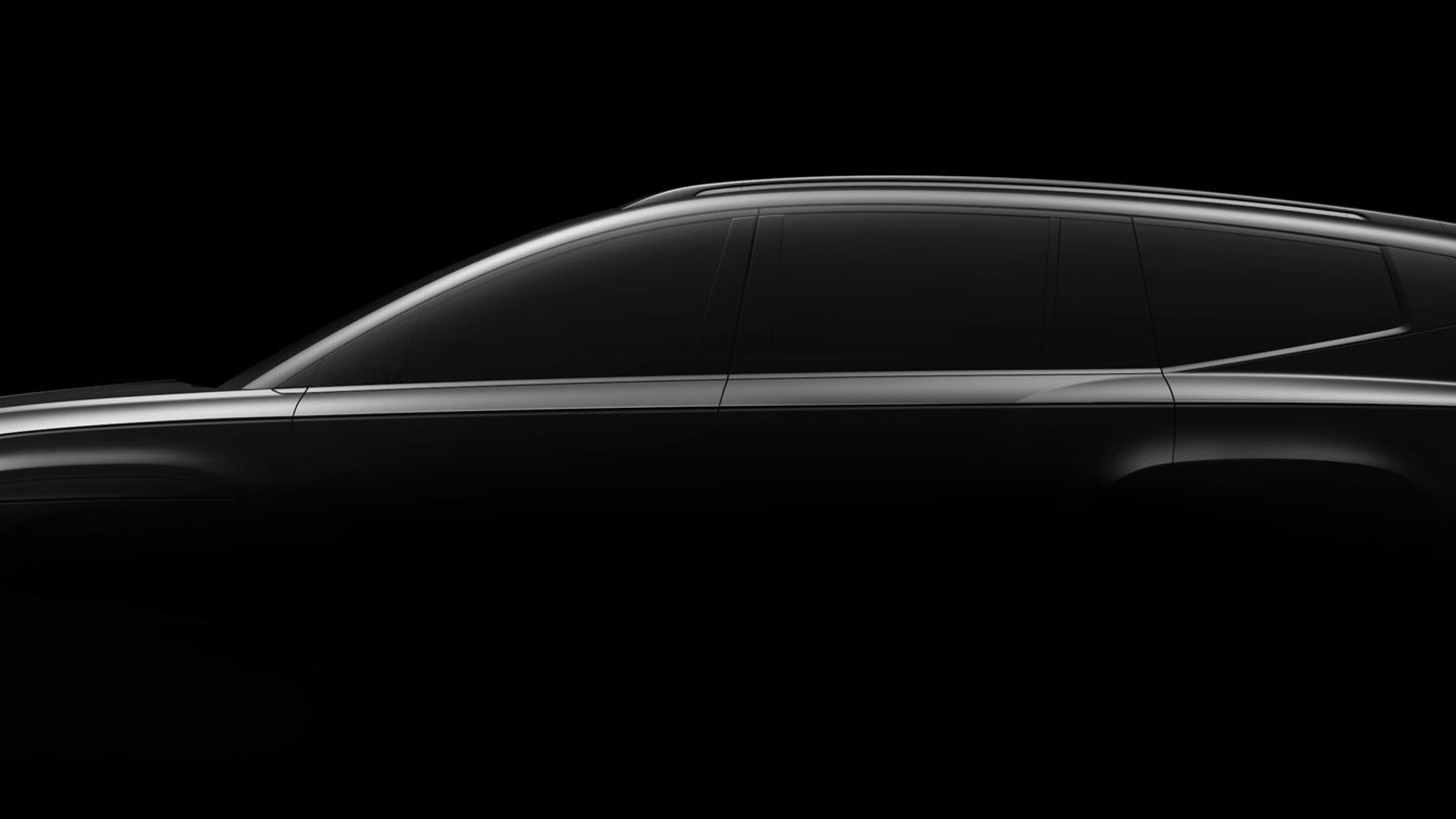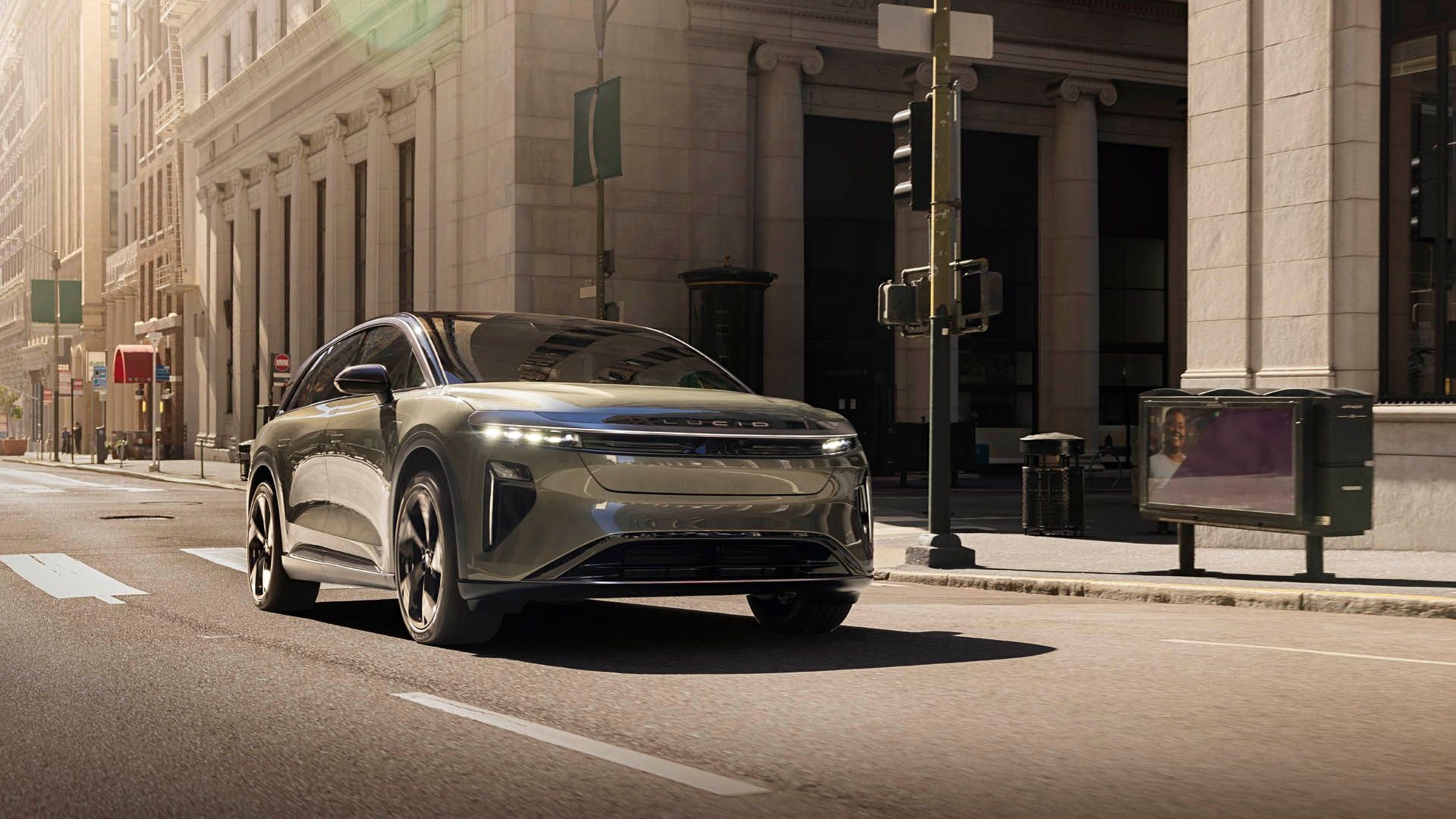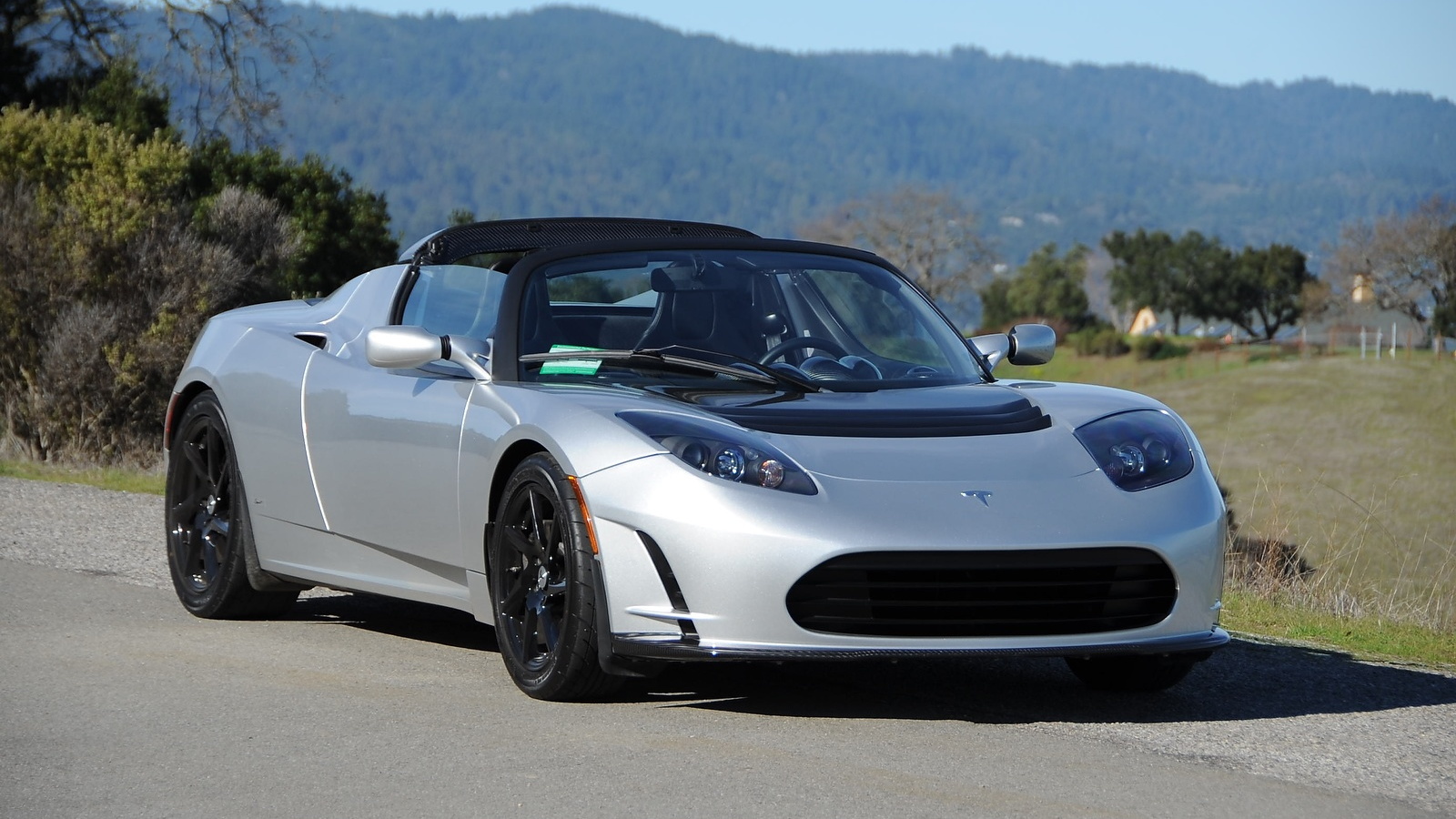Obsessive wind-tunnel work—of the sort that used to be reserved for racing and supercars—has become an essential in building modern electric vehicles like the Volkswagen ID.7.
Aero can go a long way toward accelerating EV adoption. It isn’t just the key to more miles of range and better efficiency. It helps keep battery packs smaller, the footprint of the vehicle lighter, and thus the price down. And it can help keep cabins quiet and accentuate the serenity of EVs.
Boxy electric SUVs might be the trendy thing too, but making aero a top priority is something the ID.7 has worn on its sleeve all along, since it was previewed in concept form as the ID.Aero and then revealed in this camouflaged prototype form ahead of CES in Las Vegas earlier this year. It shows how aerodynamics can lead its form and function, and it works—with sprawling space for five and their cargo, and an expected range of about 350 miles on just 77 kwh of battery in an expected U.S. model due to arrive later in 2024, for the 2025 model year.
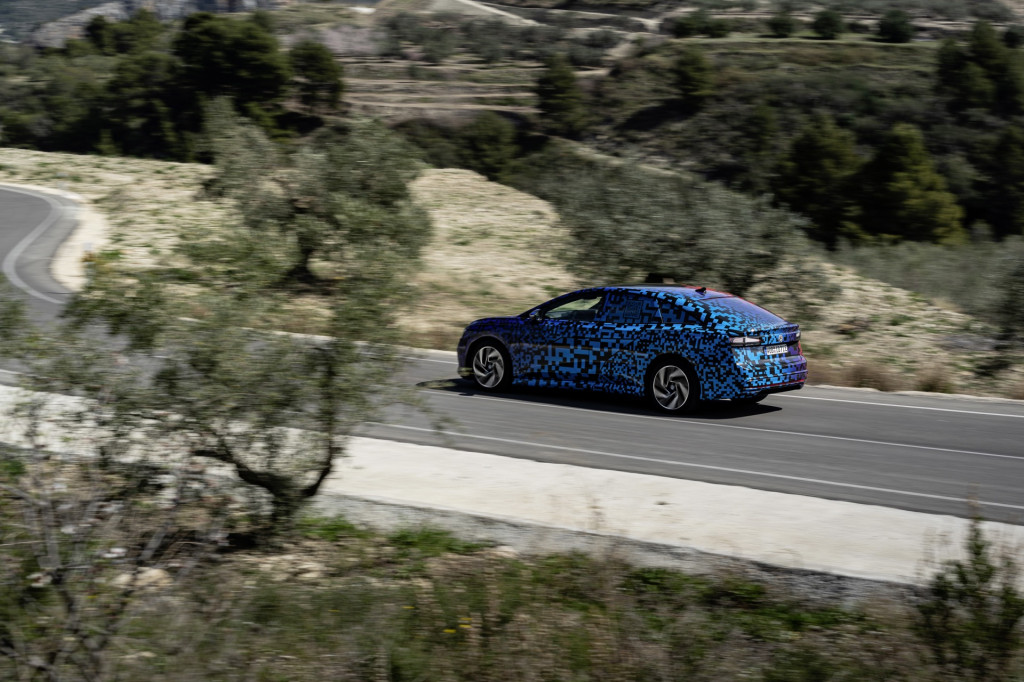
Volkswagen ID.7 prototype (Euro spec)
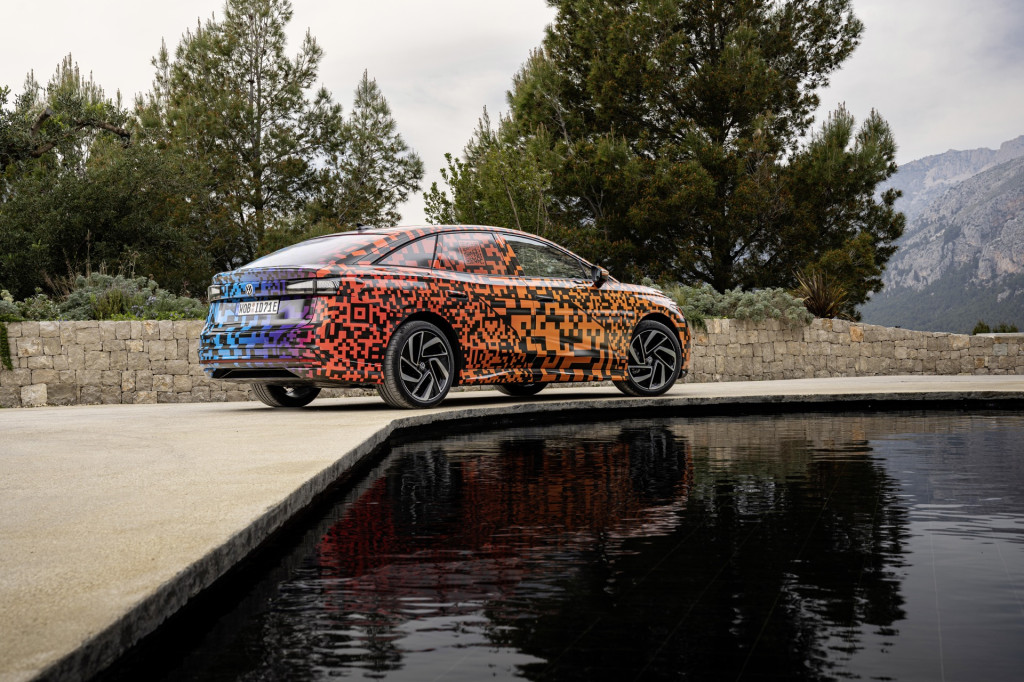
Volkswagen ID.7 prototype (Euro spec)
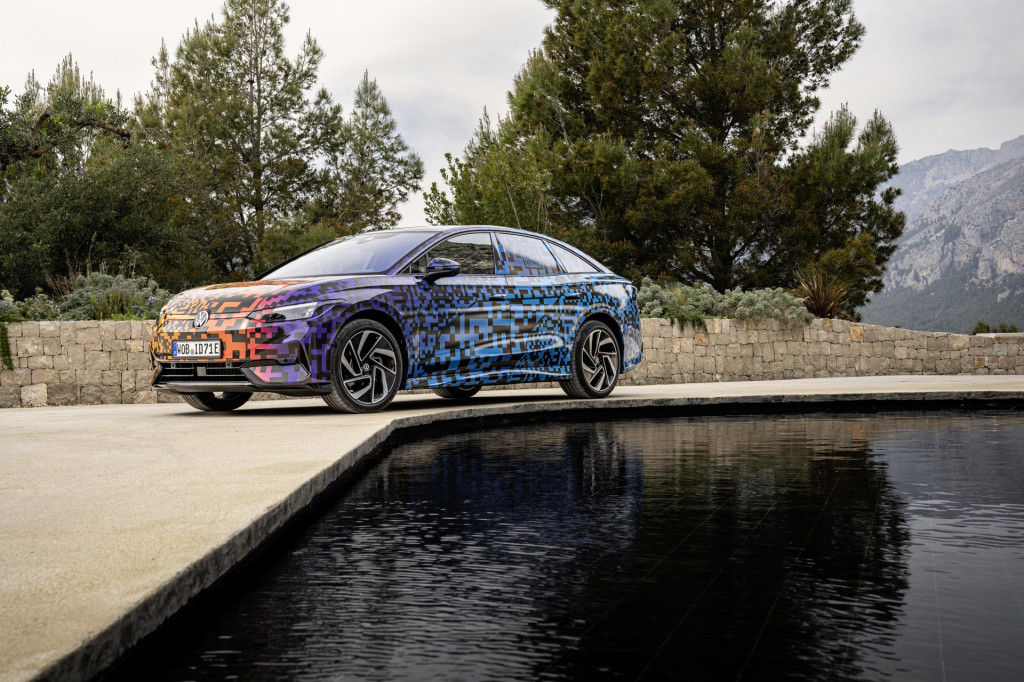
Volkswagen ID.7 prototype (Euro spec)
VW boasts that all this attention in the wind tunnel led to a coefficient of drag of just 0.23. It’s one of the most aerodynamic of what it calls the five-meter sedans.
And while sedan generally means it has a trunklid, this one’s a hatchback—a kammback, some might say, when you look at how tall the lip of the rear spoiler actually extends.
What size is the ID.7?
The profile may call out sedan, but the proportions are different. At 195.3 inches long and 73.3 inches wide, while riding on a 116.8-inch wheelbase, the ID.7 is nearly as long as a Tesla Model S, Lucid Air, or Mercedes EQE, but about as wide as the Model 3 or Hyundai Ioniq 6. Walking up to the ID.7 for the first time, even without all of its design details showing, my first impression was that it’s shorter than it is.

Volkswagen ID.7 prototype (Euro spec)
What messes with those preconceptions is the ID.7’s height. It’s 60.6 inches tall—taller than just about any sedan. The Toyota Crown is the only current offering with such proportions. In the ID.7’s case, it’s all about a balance, of fitting the battery pack and MEB components underneath, while installing a silhouette that’s as aerodynamically sleek as possible while offering all the interior space a car this size should.
Although the ID.7 doesn’t yet adopt the reengineered MEB+ architecture, it offers many of the same improvements promised for it, with a new motor, a larger battery pack, and faster charging.
VW ID.7 motor and battery upgrades
The new motor makes 282 hp and 429 lb-ft of torque—way up from the ID.4’s 201 hp and 229 lb-ft. It’s from the same family but effectively a new motor, with more windings and stronger magnets than the current ID.4 motor, and it’s oil-cooled as well as water-cooled, rather than just the latter. A new inverter also aims to perform with less heat buildup and recapture more energy from regenerative braking.
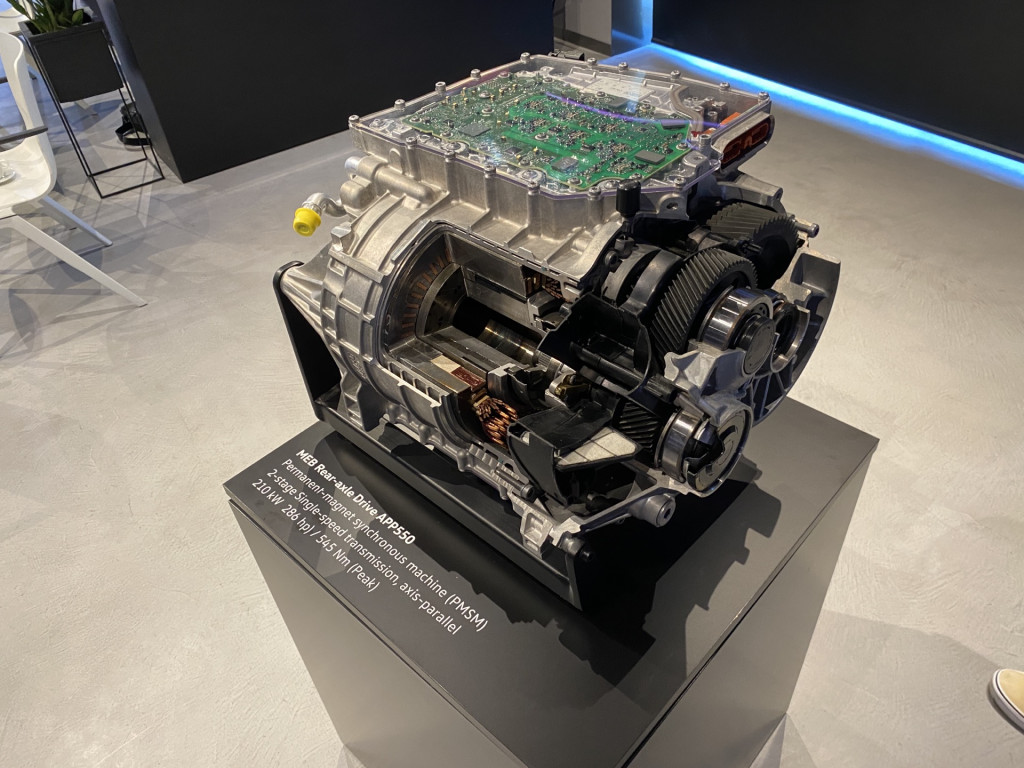
Volkswagen ID.7 prototype (Euro spec)
All-wheel drive will be available on the ID.7 eventually, and that means adding the same lower-power, asynchronous unit from the ID.4.
Also debuting on the ID.7, and enabling that 435 miles of European WLTP-cycle range, is a larger battery pack. With a capacity of 91 kwh gross and 85 kwh usable, the larger pack uses 13 modules and 208 prismatic cells—versus the ID.4’s 12 modules and 288 pouch cells, adding up to 82 kwh gross and 77 kwh usable.
The larger 85-kwh battery pack charges at up to 200 kw, allowing a 10-80% charge in about 25 minutes, while the 77-kwh pack hits 170 kw. VW has said that bidirectional charging is on the way for its MEB EVs, but it hasn’t yet provided an update on how and when this arrives.
The smaller 77-kwh pack in the ID.7 will be offered first in Europe, and when it comes to the U.S. this will be the only battery available.
Volkswagen ID.7 prototype (Euro spec)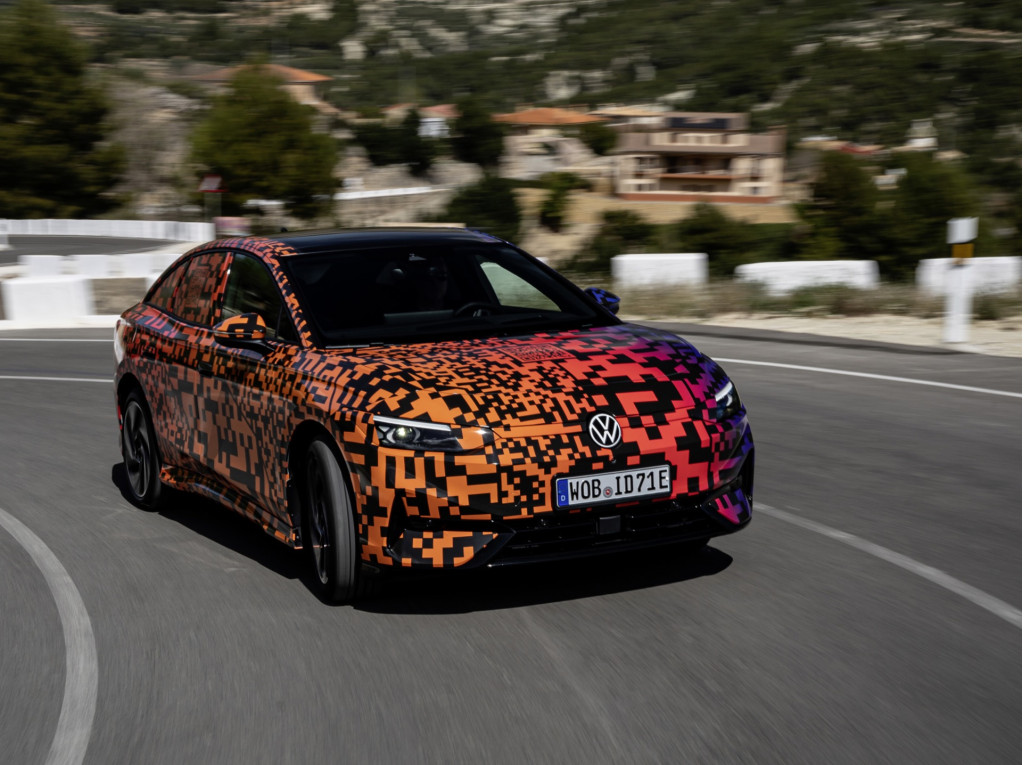
ID.7 performance: perky and plush
My driving loop with the ID.7 was brief—about 45 minutes, on isolated mountain roads near Alicante, Spain, where road bikers stopped with perplexed expressions, snapping photos of what might have looked like an art car.
Over less than 18 miles, most of it esses and hairpin turns under 40 mph. A quick blast up past 60 mph minding slow-moving locals and the occasional road bike was enough to underscore there’s plenty of passing authority from the single-motor layout.
Even that was enough to see the ID.7’s strength: It emphasizes a positively plush, quiet ride, while handling with precision but not outright sportiness. In short, VW has tuned the ID.7 to feel like a big car. It’s one of the best-tuned among plush, large sedans—on par with the Mercedes EQE sedan and Lexus ES, but with no need for an air suspension. Staggered-width tires (255 in back, 235 in front in our test car with 20-inchers) may play a role when you push it to the limit, but with a passenger on board and our car's prototype status, we settled for its grace at a rapid pace.
The optional adaptive dynamic chassis control helps too, making this big car feel tidy on the tight hairpins and roundabouts and filtering out the coarse surfacing and jittery pavement at times.
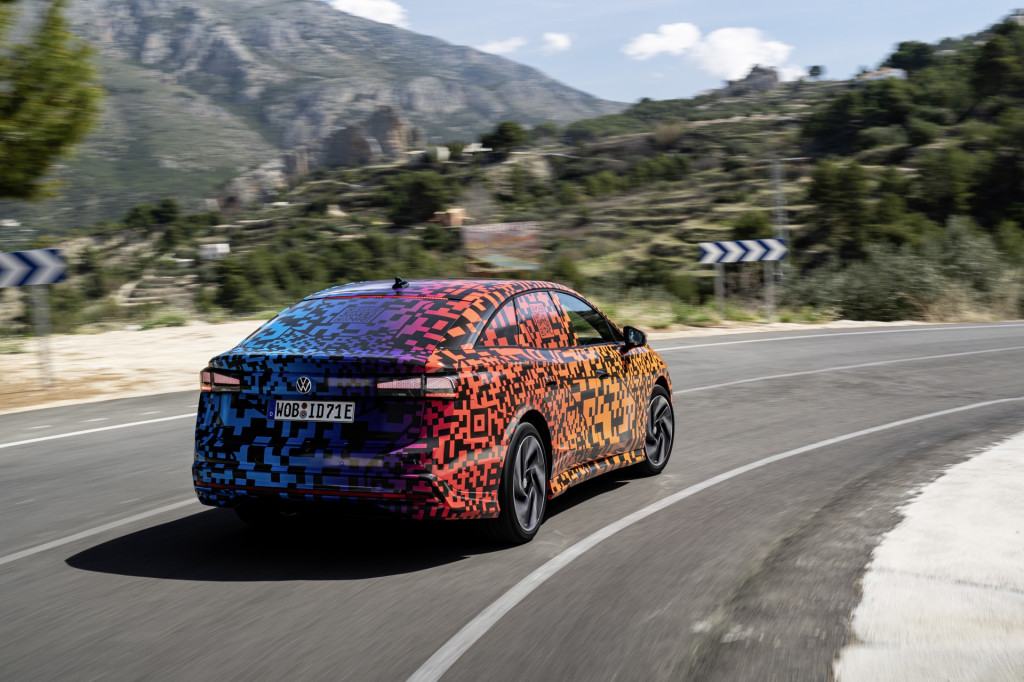
Volkswagen ID.7 prototype (Euro spec)
Varied calibrations between Eco, Comfort, Sport, and Individual offer up a range of driving personalities but most notably affected accelerator sensitivity. As with the ID.4, there’s no vast array of regenerative braking options here, or one-pedal driving; you only have ‘D’ for gliding, with slight deceleration as from a gasoline model, and ‘B’ for more.
The long wheelbase, the damping system, and nearly 4,600-pound curb weight as tested—up to maybe 4,800 pounds in dual-motor form—also bring a feeling of composure and heft.
We can’t yet share thoughts on backseat accommodations or passenger space back there, but with large door cuts and the long cabin dimensions, it’s bound to be impressive.
Volkswagen ID.7 prototype (Euro spec)
ID.7 interface and comfort
Making its debut on the ID.7 is a “reinvented” cockpit design. As with the ID.4, the ID.7’s dash emphasizes the horizontal, but a few key design differences distinguish it. The interface carries over the ID.4’s haptic steering-wheel controls but adds backlit touch-sliders below the screen for key climate functions. A large 15.0-inch touchscreen sits at the center of the dash, with a very small panel providing basics like speed and warnings. The rest of the gauge cluster has been shifted upward—to an augmented reality head-up display that will be standard on all versions of the ID.7.
Other cabin standouts include an optional 30-color ambient lightning system, 700-watt Harman Kardon sound, and new-generation ErgoActive seats that include massage, heating, and cooling—with the latter adjustable between backrest and lower cushion. Smart vents can be repositioned by dragging your finger on the touchscreen, and they function with expanded voice controls to react to specific needs: You can say “My hands are cold,” for instance, to get warm air on your hands plus the heated steering wheel activated.

Volkswagen ID.7 prototype (Euro spec)
The screen interface itself has been redesigned versus the one used in the ID.4 and ID.Buzz. While it feels as complex as ever, my takeaways were that there’s more redundancy and more ways to customize it for your daily uses. It keeps a tray of climate control buttons locked to the bottom of the screen, while users can create their own tray of shortcut icons up top. You can scroll side to side between up to five different screens of tiles, arranged as you wish—one for family errands, another for solo road trips, another for ride-hailing, for instance.
ID.7 pricing and features
The ID.7 will be built at Emden, Germany, for the U.S., which means that it won’t qualify for the revamped Clean Cars Credit, and with the U.S. version 18 months away, pricing and trim levels are yet to be set. Volkswagen calls the ID.7 a premium model.
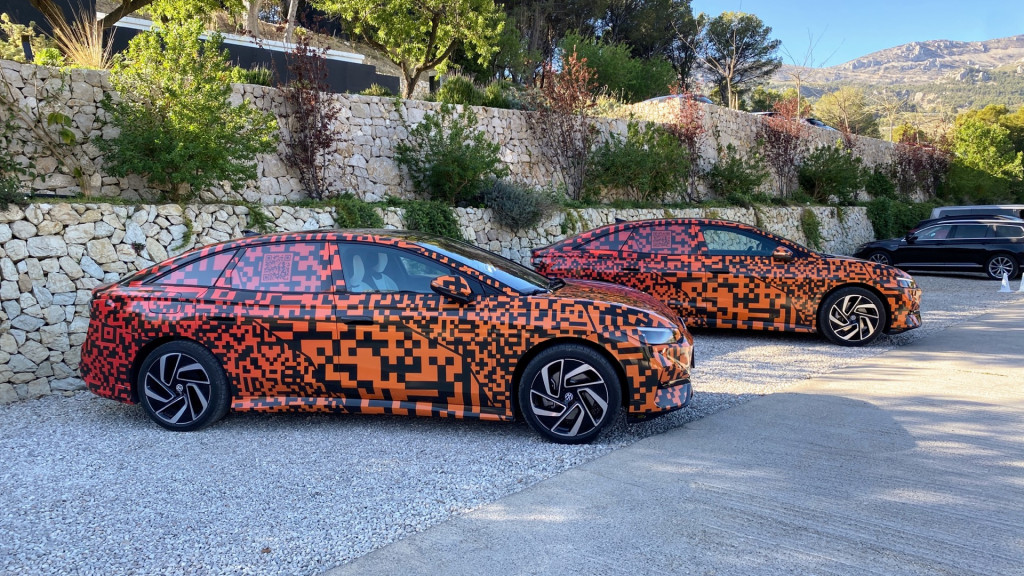
Volkswagen ID.7 prototype (Euro spec)
Based on what was said about how it will fit into the market we see it landing between the Hyundai Ioniq 6 and Mercedes EQE in price and market position—and as an all-electric alternative to the Toyota Crown or perhaps Nissan Maxima. If Nissan’s Maxima returns all-electric in a couple years, it may be the ID.7’s most direct rival.
In all, it’s more comfortable than an SUV, it goes farther while requiring less time hooked up to the charger, and it looks smart.
So there is hope for cars after all.
–
VW provided travel and accommodations to enable Green Car Reports to bring you this first-person drive report.
